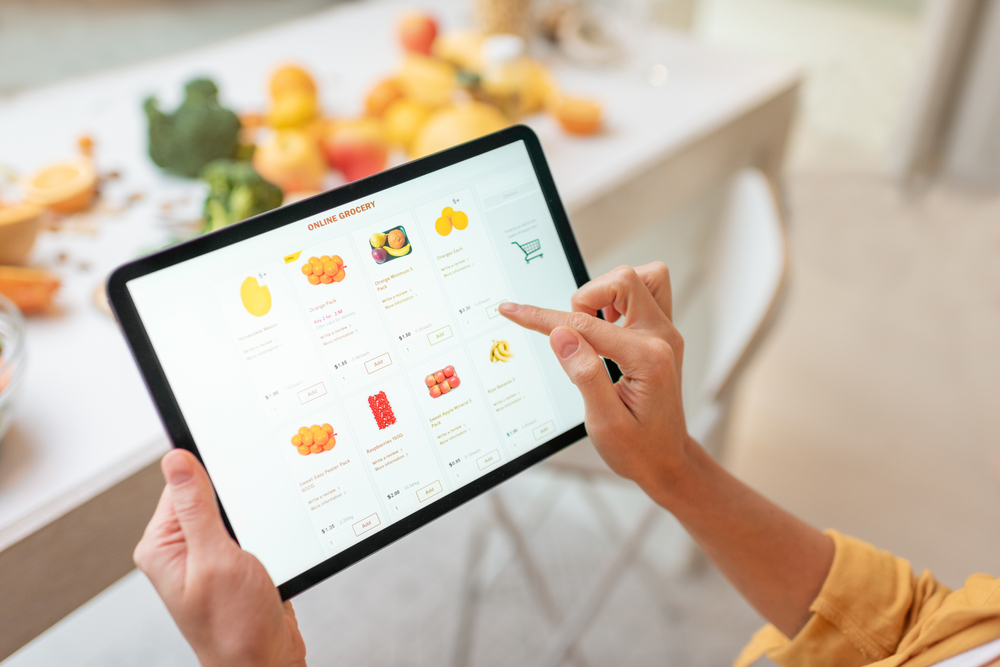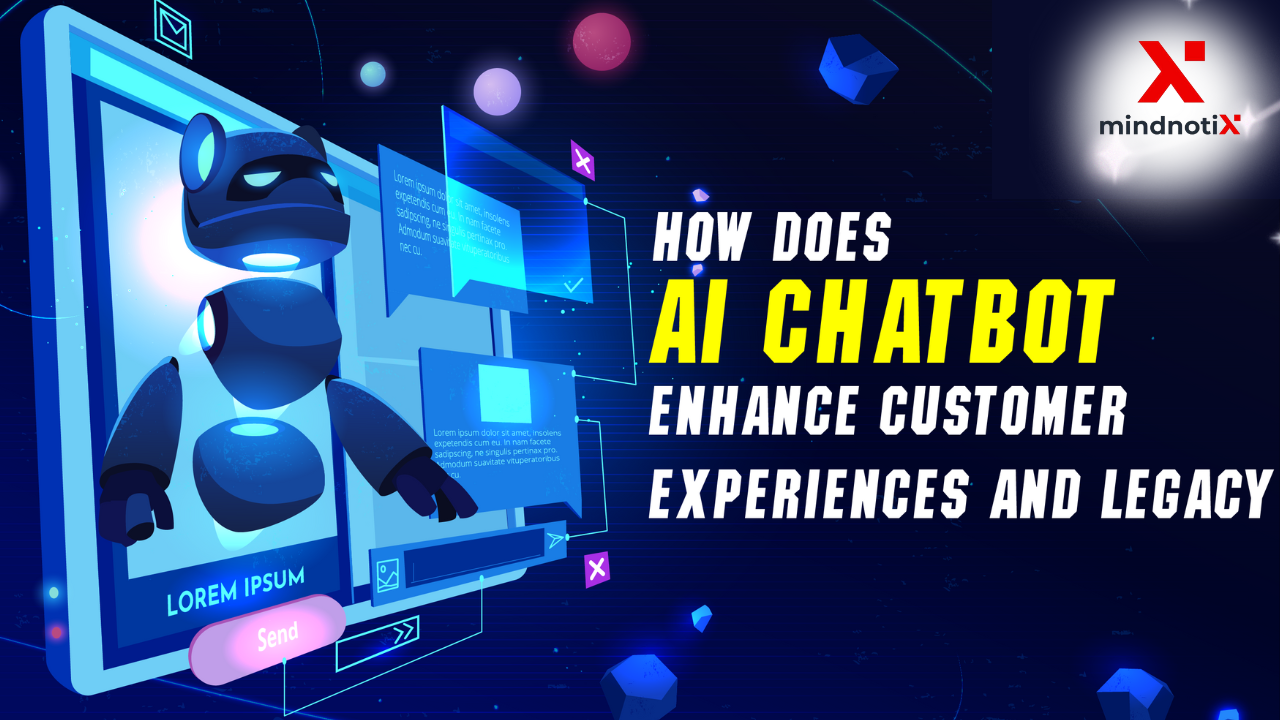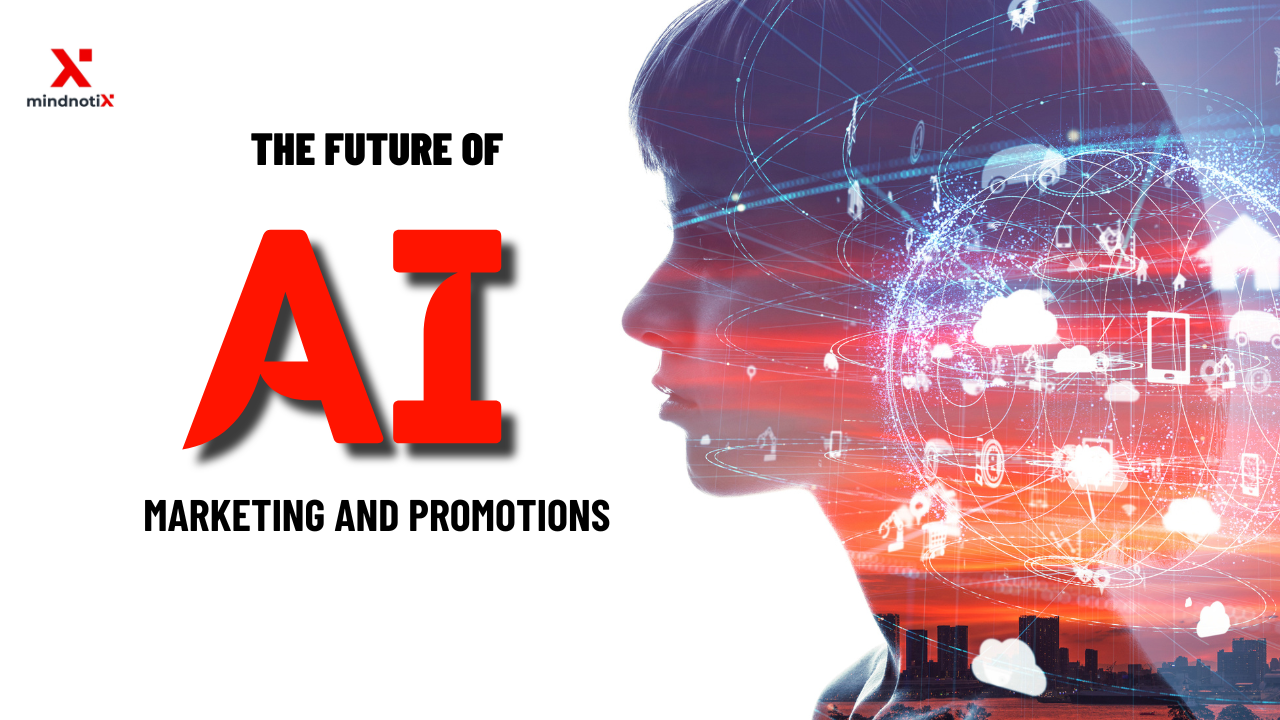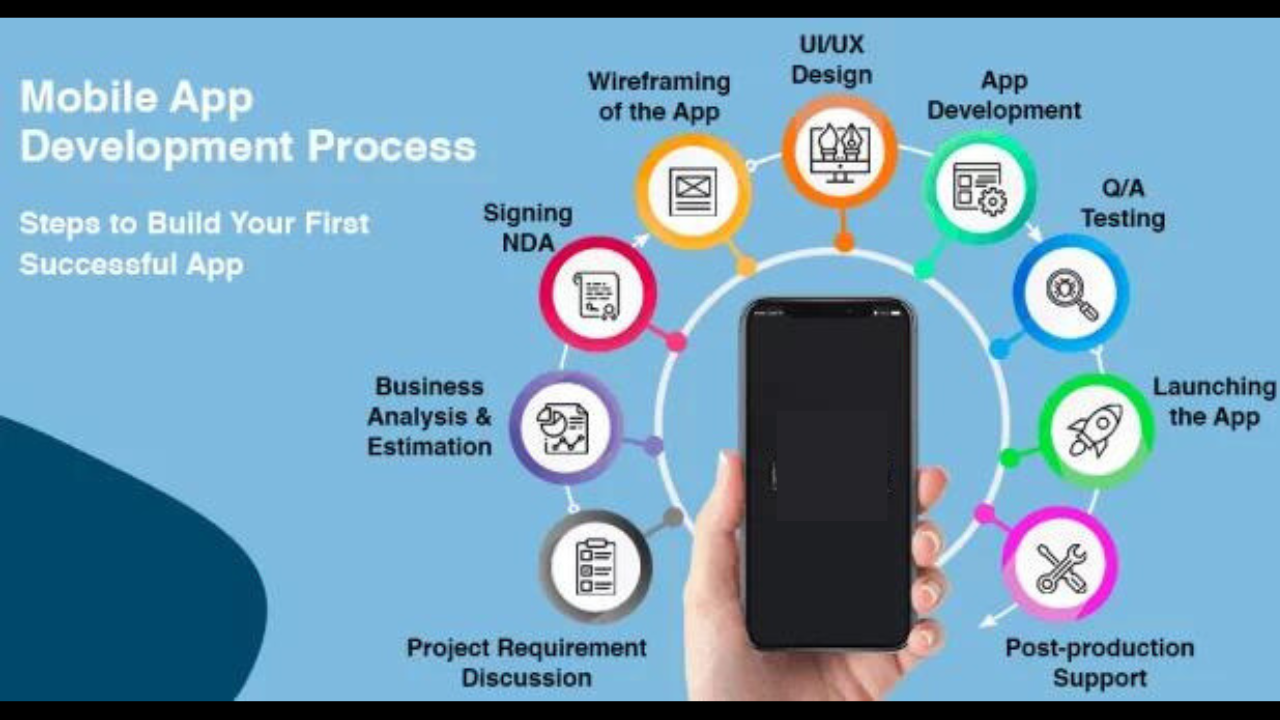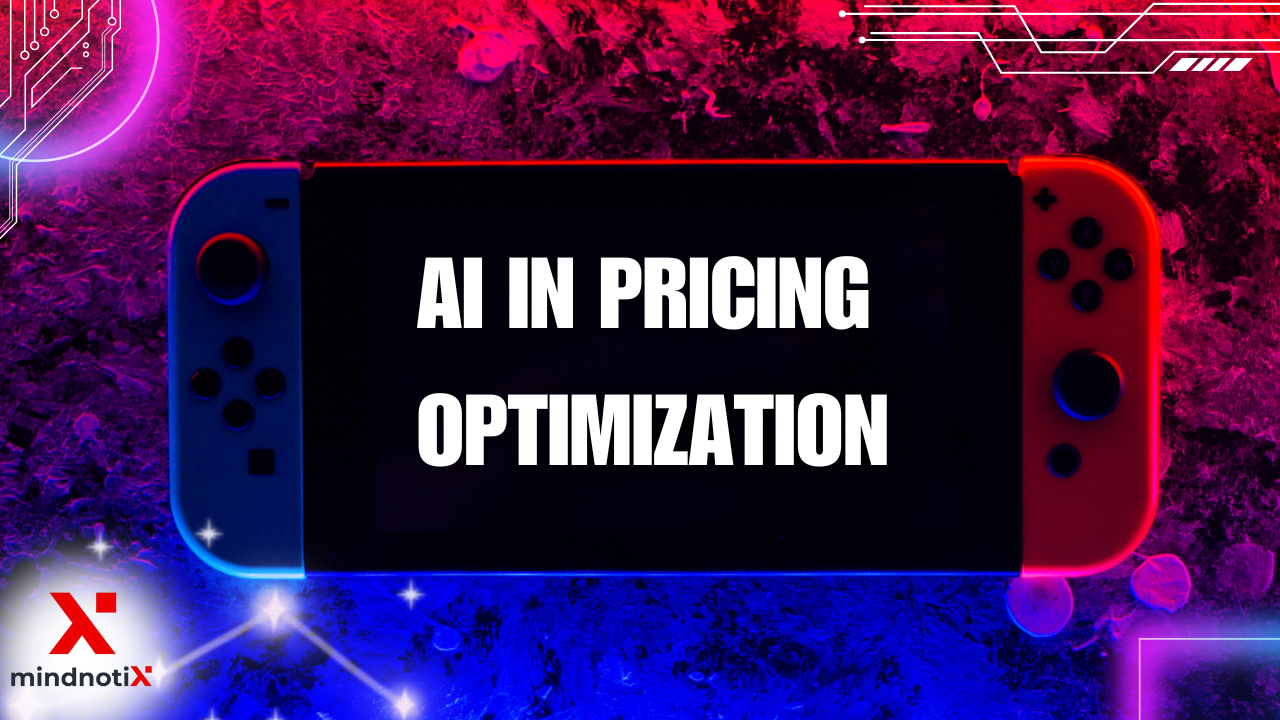Forget the long lists, crowded aisles, and forgotten essentials. The future of grocery shopping is here, and it's intelligent. AI (Artificial Intelligence) is transforming how we get food on our tables, offering a smarter, more efficient, and personalized experience from farm to fork.
Goodbye Grocery Guesswork, Hello AI Recommendations
No more staring blankly at a fridge full of half-used ingredients. AI can analyze your past purchases and dietary preferences, suggesting new recipes and items you'll love. Need a healthy meal plan? AI can create one based on your needs and what's in season. Planning a party? AI can help you estimate quantities and ensure you have everything you need to avoid last-minute dashes to the store.
Optimizing Every Step: From Farm to Your Fridge
AI doesn't just help you shop; it helps the entire food chain run smoother. By predicting demand with greater accuracy, stores can stock the right amount of product, minimizing food waste. This, combined with optimized delivery routes planned by AI, means fresher food for you and less environmental impact.
Saving Time and Money: The Power of AI
Imagine getting the best deals without scouring flyers or endlessly comparing prices. AI can track prices, identify sales, and even suggest alternative ingredients when something's out of stock. This translates to significant savings for you and a more streamlined shopping experience.
The Future of Food is Personalized
The days of generic grocery shopping are numbered. AI is ushering in an era of customization. Imagine receiving personalized offers based on your dietary restrictions, ethical preferences (organic, local, etc.), or even your mood! Craving comfort food? AI can suggest ingredients for a hearty stew. Looking for a light and healthy option? Your AI assistant will be there to guide you.
In today’s world, the global food value chain is like a complex puzzle that spans the planet, enabling the distribution of vital sustenance. This system involves numerous stakeholders, including farmers, manufacturers, distributors, retailers, and consumers, all interconnected in a delicate balance. In the 2020s, the world witnessed the disruption of this intricate network with the COVID-19 pandemic. Another more recent example is the Avian Flu outbreak[i] in the United States, which resulted in economic costs ranging from US$2.5 billion to US$3 billion, food shortages and exacerbated food prices. Imagine artificial intelligence (AI) and blockchain decentralized tracking networks had been in place to collect infectious disease data transparently and reliably[ii] and to forecast supply and demand with an optimized food network distribution.
Climate change is another challenge that impacts the entire food value chain, revealing its vulnerabilities. It has caused erratic crop yields, resulting in manufacturing shortages, increased transportation costs, and pricing fluctuations. This presents further challenges within the innovation agenda as procurement teams struggle to find sufficient materials meeting specific quality requirements, forcing them to use alternative materials that could affect the final product’s performance, ultimately influencing consumer purchasing behavior. The image below illustrates the current globalized food value chain and the complex, interdependent challenges faced by its stakeholders in today’s world.
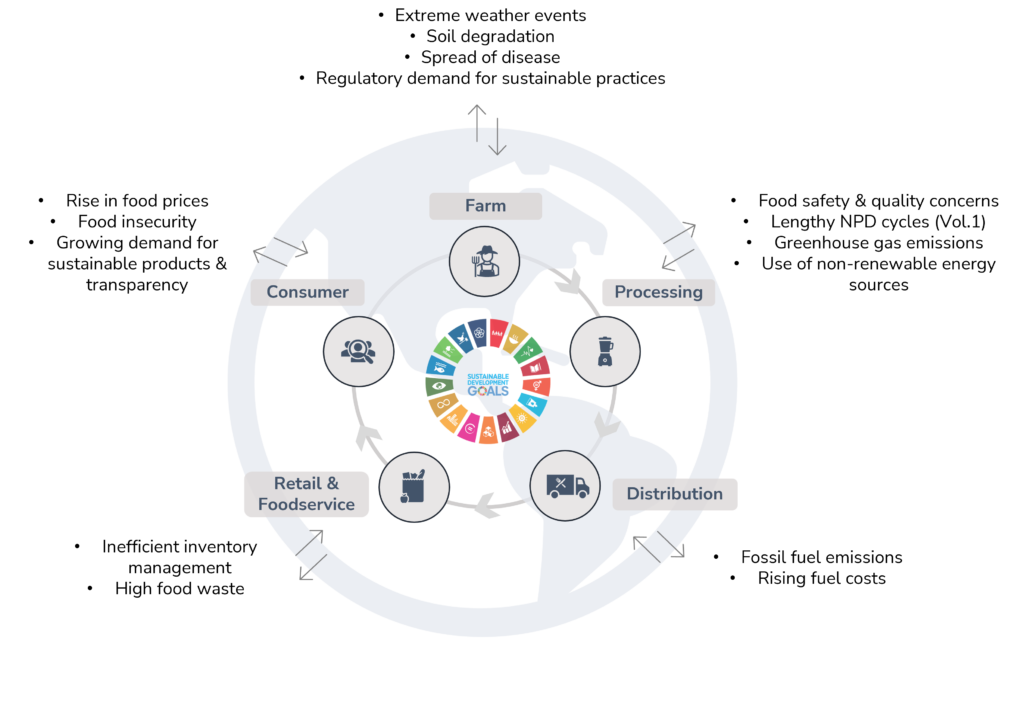
The global food value chain, its influences, and interdependencies among stakeholders
Beyond the immediate impacts of climate change and other external disruptions, the food value chain faces a host of other challenges including inefficient resource usage, operational inefficiencies, pest and disease monitoring issues, regulatory compliance demands, transparency expectations from consumers, food waste problems, sustainability concerns, difficulties in assessing environmental impact, slow innovation cycles, evolving consumer preferences, and infrastructure and technology gaps in certain regions.
These challenges require innovative technologies to support them. To improve the efficiency of the global food value chain, it is crucial to have quick communication and access to valuable information through a robust data network (alongside shared goals and alignment on KPIs across the value chain!). AI, through its capabilities in data analysis, predictive analytics, automation, and real-time monitoring, emerges as a transformative force in the industry that empowers the creation of a highly efficient, interconnected, and intelligent value chain, facilitating exceptional operational performance, now and in the future.
This article, following our previous exploration of AI’s role in new product development, delves into how AI is reshaping the food industry and its critical value chain (see Figure below).
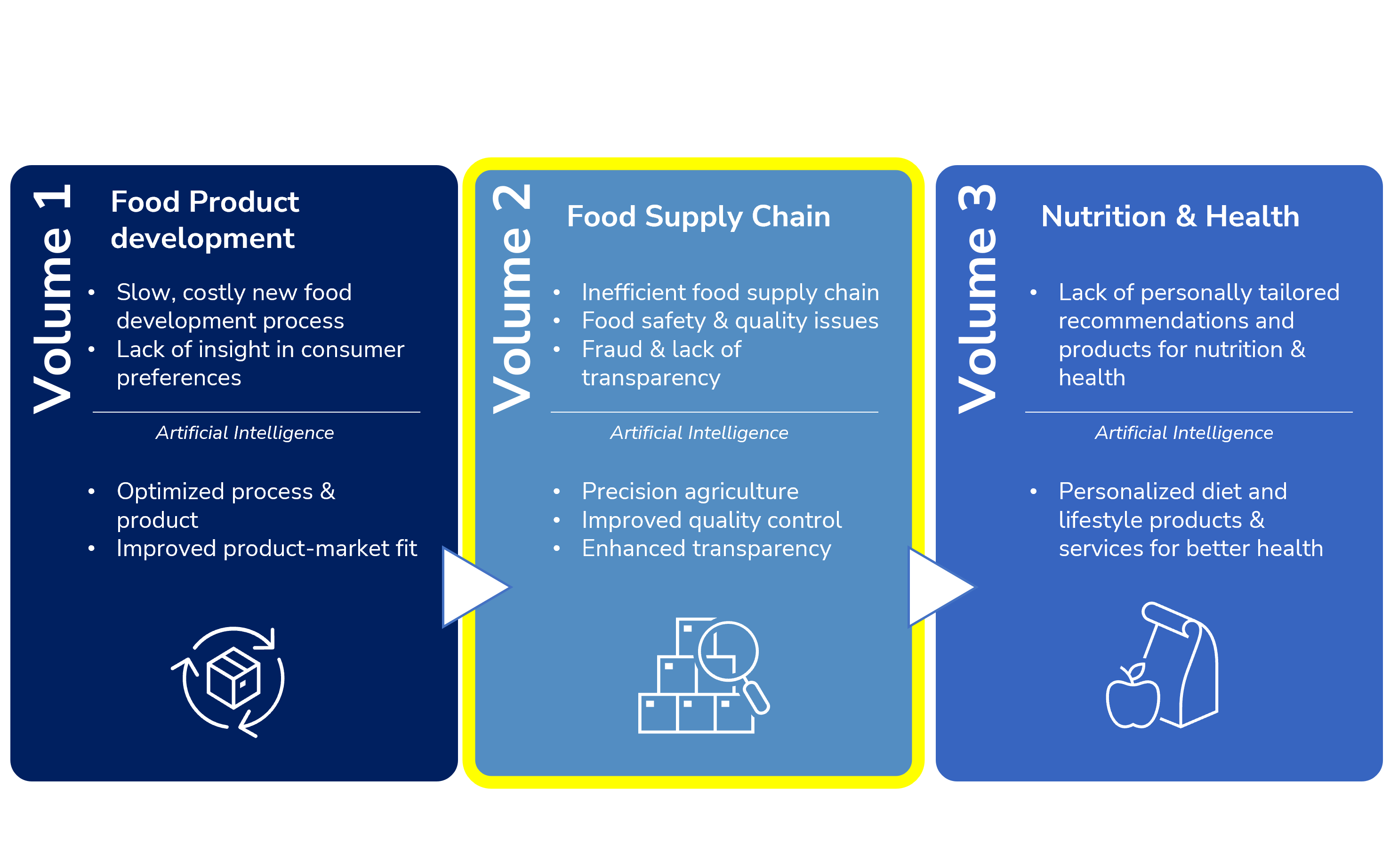
THE ROLE OF AI IN OPTIMIZING THE FOOD VALUE CHAIN
Agriculture
Global agriculture faces challenges like manual labor, fertilizer, pesticide, and herbicide overuse, inaccurate demand predictions, resource inefficiency, crop diseases, and unpredictable weather, causing production variations affecting food supply. A major issue is 800 million small-scale farmers lack shared information platform, hindering crop decisions.
AI in Precision Agriculture:
Real-time monitoring: AI provides real-time insights into critical factors such as soil moisture, crop water requirements, and weather predictions for precise decision-making. Another important application is the monitoring of biodiversity, including bee health and pollination efforts.
Remote Sensing: AI-powered drones and satellites for crop health monitoring and yield estimation.
Resource Optimization: AI algorithms optimize the use of fertilizers and pesticides, reducing waste and environmental impact.
Smart Irrigation: Automated watering processes for water conservation.
Robotic Farming: Autonomous AI-driven systems handle tasks like planting, harvesting, and weeding, improving efficiency and reducing labor costs.
Furthermore, AI is revolutionizing controlled indoor farming. It offers all-season production, reduces land use, and minimizes the need for chemicals. Here, AI aids to monitor and optimize environmental conditions for higher yields and resource efficiency (water / electricity / heat). Optimal control over growing conditions, including LED lighting type, color, and duration, can furthermore enhance food quality. These indoor farms are often located closer to consumers, thereby shortening food value chains, and reducing transport-related emissions. Despite the ongoing energy challenges, the integration of urban farming with AI presents a promising solution for ensuring food security and sustainability in densely populated regions with limited available farmland.
In livestock farming, AI-powered sensors have been developed to track the livestock’s state and behavior, allowing the detection of illness that are beyond human monitoring capabilities, enabling the efficient antibiotics administration on a large scale, minimizing the need for their excessive use, and curbing antibiotic resistance.
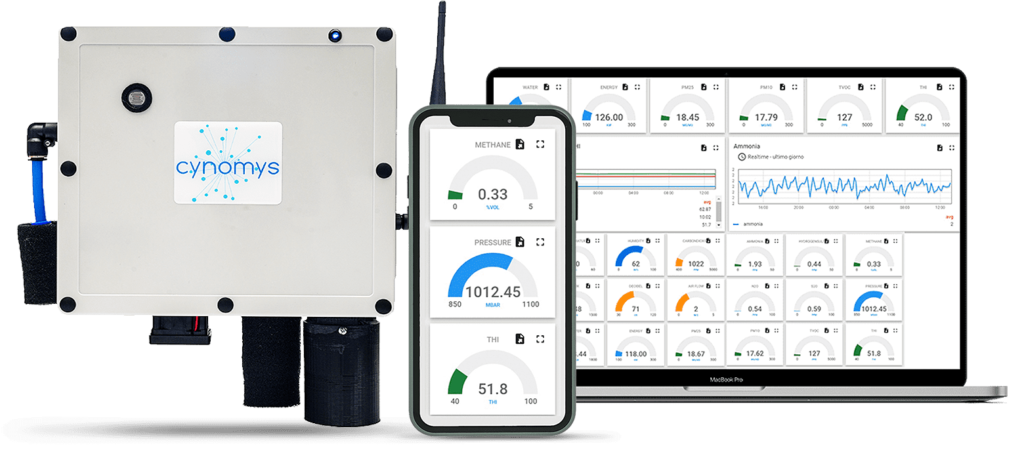
Quality Control & Distribution
After crops are harvested at the right maturity, they are transported from farms, to processing facilities, CAFO’s, wholesale storage distribution centers, retail outlets, restaurants, and ultimately, consumers. This distribution network faces challenges, ranging from inadequate storage, inventory management issues, to transportation problems, all contributing to high costs and food waste. Food quality control processes are time-consuming and prone to (human) error resulting in significant food waste (e.g., the need to discard an entire truckload of fresh produce). Efficient food storage, especially cold storage, is critical for maintaining food quality and safety. The rise of e-commerce and direct-to-consumer sales further emphasizes the importance of optimizing inventory management. Additionally, transportation and distribution involve issues like rising fuel costs, regulatory compliance, infrastructure limitations, and sustainability concerns, especially with the growing demand for just-in-time deliveries and the expansion of last-mile logistics.
AI in QC & Distribution:
Precise Inventory Forecasting: Accurate stock predictions, reducing overstocking and understocking.
Energy Efficiency: Employing AI to optimize warehouse operations, including lighting, temperature control, and equipment usage, thereby reducing energy consumption and operational costs.
Quality Control: Enhancing inspection accuracy through AI-driven automation.
Waste Reduction: Implementing AI-driven strategies for improved inventory management, reducing the likelihood of food spoilage and waste.
Predictive Maintenance: Using predictive maintenance models to anticipate equipment breakdowns in transportation preventing costly delays.
Sale: Retail + Foodservice
Challenges in the retail sector revolve around delivering efficient grocery shopping experiences, minimizing food waste, and optimizing inventory. A significant hurdle is the lack of integrated data, impacting inventory visibility, personalization, and overall value chain management. This hinders retailers from effectively understanding and engaging customers, refining pricing strategies, and adapting to evolving consumer behavior and market dynamics. Moreover, with the surge in e-commerce and contactless shopping, long-term competitiveness further highlights the importance of adopting integrated data solutions.
AI in Retail:
Demand Forecasting & Inventory Management: AI-driven demand prediction models to gain insights into consumer demand, aiding in better stock management, reducing waste and operational costs as well.
Personalized Shopping: Enhanced personalized shopping experiences based on behavioral data and historical purchases. Virtual shopping assistants contribute to this by providing recommendations and assistance.
Pricing Strategy Refinement: Utilizing AI to refine pricing strategies through improved understanding of consumer behavior and market dynamics.
In the foodservice sector, challenges encompass streamlining kitchen operations for increased efficiency, maintaining rigorous food safety standards, optimizing menus, and pricing, and enhancing the overall dining experience to ensure customer satisfaction, build loyalty, and reach profitability.
AI in Foodservice:
Improved Efficiency: Streamlining restaurant operations for enhanced efficiency and reduced food preparation time.
Food Safety Compliance: AI-powered systems for rigorous monitoring and ensuring compliance with food safety regulations throughout the value chain.
Customer Service Enhancement: Personalizing service, managing wait times, and efficiently processing orders to enhance overall dining experiences.
Demand Forecasting: Accurately predicting customer traffic through historical and real-time data for better resource allocation.
Menu Optimization: Optimizing menu offerings and pricing strategies to cater to diverse customer preferences while maximizing revenue.
Staffing Solutions: AI-driven robots and automation to address staffing challenges and improve workforce efficiency in the foodservice industry. Challenges with this technology include the need for vast amounts of data, steep capital requirements and a long path to revenue.
The Grocery Revolution is Here
AI-powered grocery shopping isn't science fiction; it's the exciting future. This technology offers a win-win for everyone: fresher food for consumers, reduced waste for the environment, and increased efficiency for the food industry. So, ditch the grocery list and embrace the intelligent future of food!
Read more here:
1 https://mindnotix.com/blogs/revolutionizing-groceries-how-ai-is-streamlining-your-deliveries
2.https://www.mindnotix.com/blogs/the-future-of-food-delivery-ai-powering-a-smarter-kitchen
3.https://www.mindnotix.com/blogs/from-fridge-to-doorstep-how-ai-is-optimizing-your-grocery-list
6. https://www.mindnotix.com/blogs/get-fresher-food-faster-how-ai-is-transforming-deliveries
7. https://www.mindnotix.com/blogs/the-personalized-pantry-ai-recommendations-for-a-healthier-you
8. https://www.mindnotix.com/blogs/say-goodbye-to-grocery-shopping-your-ai-powered-delivery-solution
For more information contact : support@mindnotix.com
Mindnotix Software Development Company


 AI-Taxi App
AI-Taxi App AI-Food App
AI-Food App AI-Property Mgmt App
AI-Property Mgmt App AI-CRM
AI-CRM AI-Fantasy App
AI-Fantasy App
 Web Development
Web Development App Development
App Development Business & Startup
Business & Startup Hire Developer
Hire Developer
 Digital Marketing
Digital Marketing Lead-generation
Lead-generation Creative Agency
Creative Agency Branding Agency
Branding Agency Augmented Reality
Augmented Reality Virtual Reality
Virtual Reality Internet of Things
Internet of Things Artificial Intelligence
Artificial Intelligence Blockchain
Blockchain Chatbot
Chatbot